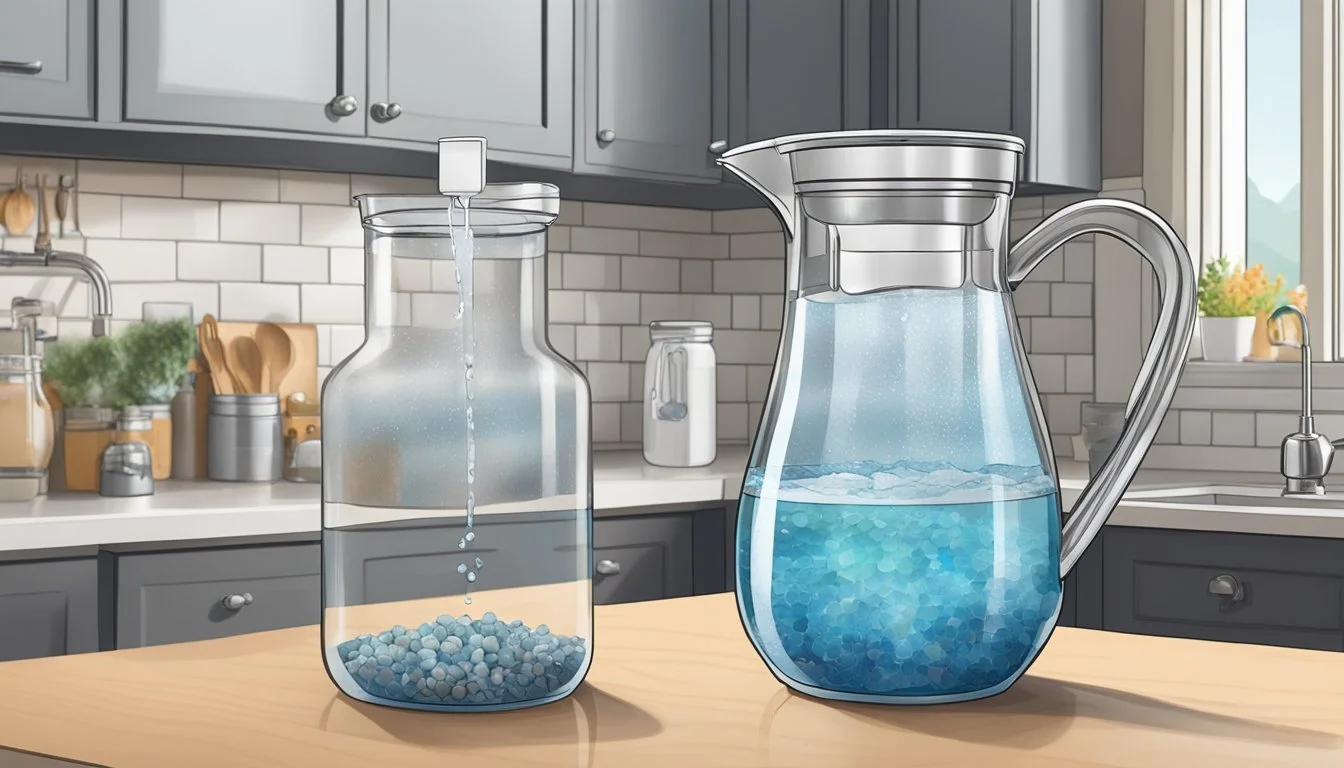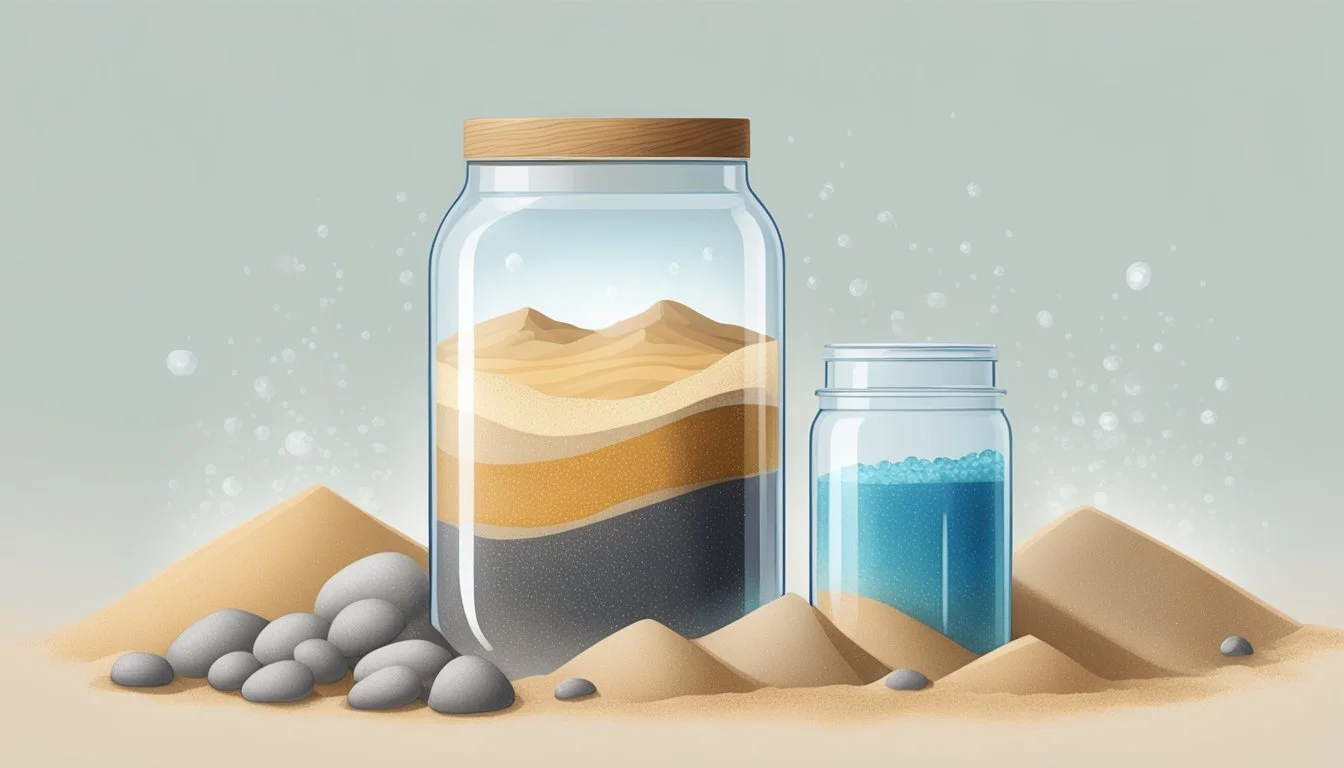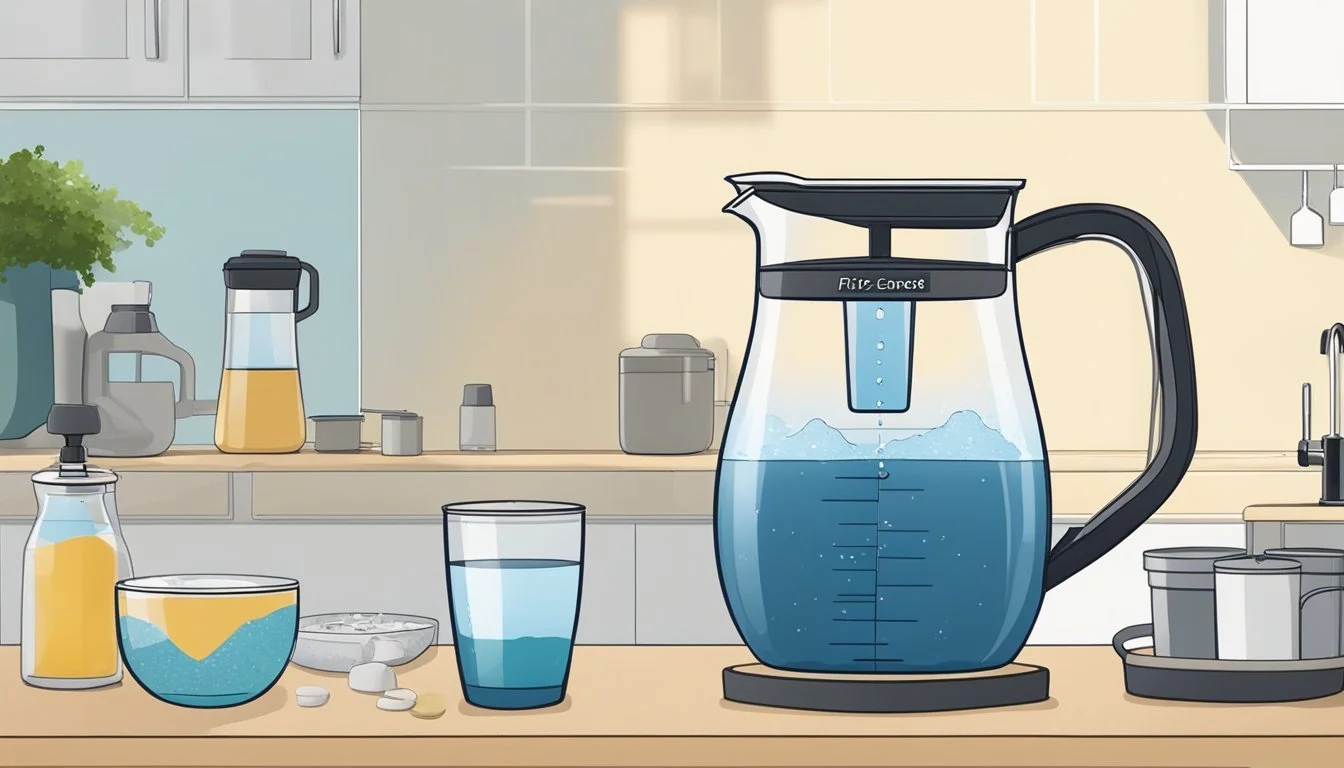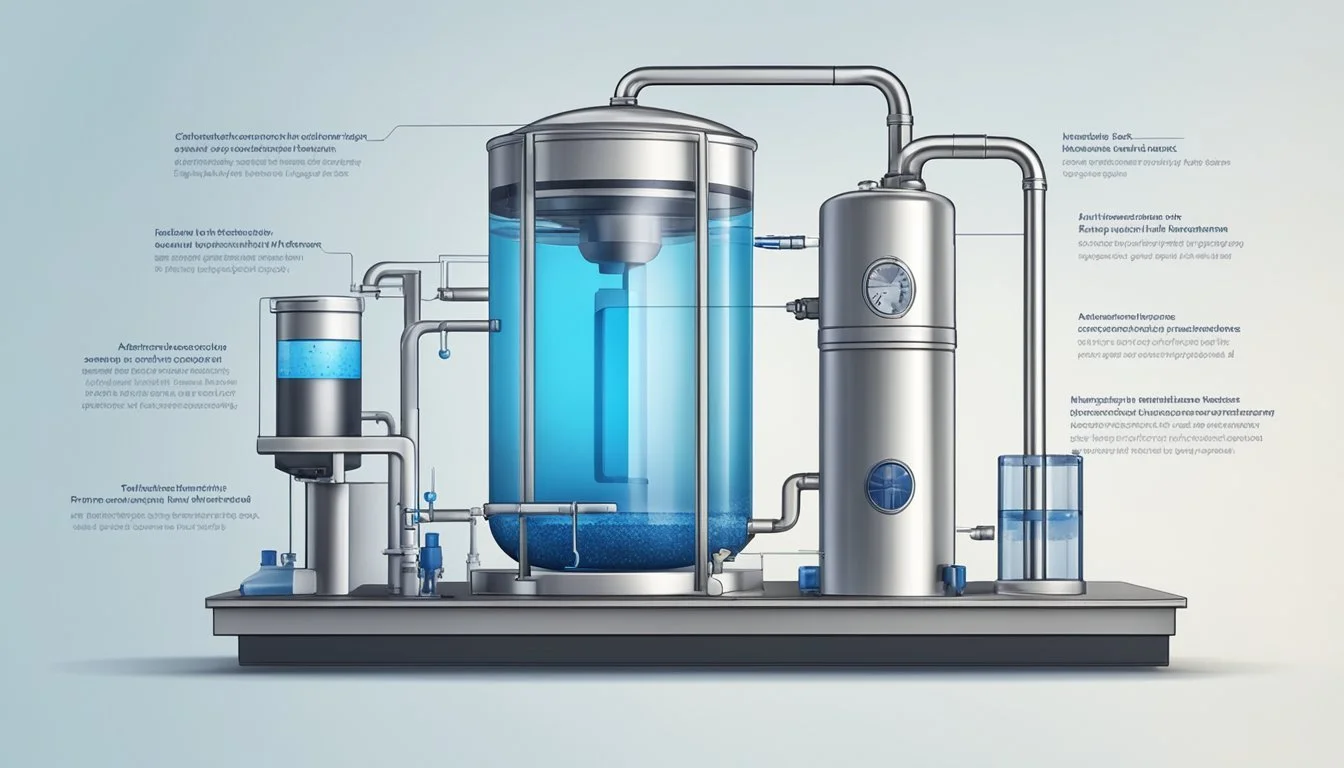Exploring DIY Water Filtration Solutions
Keep Your Home Hydrated
Ensuring access to clean water is a fundamental concern for homeowners, and a DIY water filtration system can be an efficient and cost-effective solution. A well-designed filtration system can provide clean, safe drinking water by removing a variety of harmful contaminants—from sediment and dissolved solids to organic compounds that affect taste and odor. Not only does this homemade approach offer a practical alternative to bottled water, it also reduces reliance on plastic bottles, mitigating the environmental impact of plastic pollution.
Various options are available to meet diverse needs, ranging from simple countertop filters and faucet attachments to more complex whole house water filtration systems. The choice of filtration materials, including activated carbon filters, sand, and gravel, plays a crucial role in the quality of water produced. Pitcher filters, while convenient for fridge space, may not always remove the broad range of contaminants that a more involved system might tackle. On the other hand, larger systems can manage gallons of water at a time, ensuring that water pressure and supply remain consistent.
Whether it’s a basic filtration system using recycled materials or a more sophisticated setup with multiple stages of filtration such as reverse osmosis, DIY filtration solutions empower individuals to take control of their water quality. Choosing to build a filter from scratch or modify existing systems with replacement filters, homeowners can secure a healthier lifestyle while enjoying the taste of cleaner water and ensuring safety from biological and other contaminants. Investing the time to understand the nuances of various filtration systems and the quality of the water source can lead to an efficient exchange of resources for a lasting supply of pure water.
The Importance of Water Filtration
Providing safe and clean drinking water through effective filtration removes harmful contaminants and can support a healthier lifestyle, while also considering the environmental impacts.
Health Benefits of Clean Water
Clean water, free from contaminants like bacteria and organic compounds, plays a crucial role in maintaining health. Water purifiers and house water filters remove a range of contaminants such as sediment, chlorine, and lead, directly affecting the quality of tap water. Drinking water that has passed through a carbon filter, for instance, ensures the removal of dissolved solids and harmful substances that can pose health risks. This results in safer water that supports hydration and overall well-being without the adverse effects that contaminants can cause.
Environmental Impact of Water Filtration
Using house water filtration systems can significantly reduce reliance on plastic water bottles, thus mitigating plastic pollution. Filtration systems, including countertop water filters, sink filters, and water pitchers, provide cleaner water without the waste associated with single-use water bottles. By encouraging the use of reusable water bottles and installing faucet filters or reverse osmosis water filters, households contribute to less plastic entering landfills and oceans. Moreover, filter replacements typically have a lower average cost and environmental impact compared to the continuous purchase of bottled water.
Understanding Contaminants
When considering a DIY water filtration system, it's essential to recognize the variety of contaminants that can affect water quality. This knowledge is critical to selecting the right filtration materials and technologies to ensure safe drinking water.
Types of Common Containtaminants
Contaminants in water can be broadly categorized into several groups:
Physical Contaminants:
Sediment or organic material suspended in the water from soil erosion.
Chemical Contaminants:
Substances such as nitrate, lead, and other heavy metals, pesticides, and chlorine that originate from industrial and environmental pollution.
Volatile organic compounds (VOCs) which include a variety of chemicals that may cause health issues.
Biological Contaminants:
Microorganisms such as viruses, bacteria, parasites, and protozoa.
Radiological Contaminants:
Ionic radiation from substances like uranium that can contaminate water.
Secondary Contaminants:
These affect the taste, color, or smell of water but are not necessarily harmful to health, such as iron or sulfur.
By understanding the range of contaminants, individuals can choose appropriate filtration methods, whether a basic filtration to improve taste and odor or a more sophisticated system like reverse osmosis to remove dissolved solids or biological contaminants.
How Contaminants Affect Water Quality
The presence of contaminants in your water supply can:
Health Impact:
Pose health risks if ingested, including gastrointestinal and neurological issues, especially for people with compromised immune systems.
Aesthetic Quality:
Lead to an unpleasant taste or odor, making water less appealing to drink, which can indirectly affect individual's hydration levels.
Household Effects:
Cause build-up in appliances, reducing efficiency and the lifespan of coffee makers, water heaters, and pipes.
An effective house water filtration system can greatly mitigate these issues, significantly improving the safety and quality of your tap water. Filter types range from carbon filters and sediment filters to advanced options like reverse osmosis water filters, each playing a crucial role in removing specific types of contaminants. Regular filter replacements ensure the system maintains optimal performance, providing clean and safe drinking water for your household.
DIY Filtration Basics
Creating a DIY water filtration system is a practical way to ensure access to clean water in your home. Employing basic construction techniques and readily available materials, individuals can assemble a filter that reduces unwanted contaminants from their water supply.
Essential Materials for DIY Filters
To build a basic but effective homemade water filtration system, you’ll need a variety of materials, each serving a specific purpose in the filtration process:
Containers: Two buckets or plastic water bottles can act as the housing for your filter.
Filter Media: Gravel, sand, and activated charcoal filter out different sizes of particles and adsorb harmful substances, including organic compounds.
Supporting Layers: Coffee filters or cloth can serve as preliminary and post-filtration stages.
Additional Materials: For improved cleanliness and efficiency, consider a carbon filter layer to specifically target chemical impurities.
Make sure to gather these materials, ensuring they are clean and safe for use in water filtration.
Preparation Steps Before Building
Prior to constructing your filter, follow these preparatory steps:
Water Testing: Determine the contaminants present in your water source to select the appropriate filtration materials.
Gather Tools: Common tools like a hammer, nail, and a sharp knife will be necessary for assembly.
Filter Design: Plan the arrangement of your filtration layers to maximize the quality of the filtered water.
Sanitization: Thoroughly clean the buckets or bottles to avoid introducing contaminants during filtration.
This preliminary setup plays a pivotal role in ensuring the effectiveness of your DIY water filtration system for safer drinking water.
Carbon-Based Filtration Methods
Carbon-based filtration stands as a trusted and efficient method to produce cleaner and safer drinking water through the removal of organic compounds and certain contaminants from water.
Using Activated Carbon for Filtration
Activated carbon filters, a prevalent choice in water purification, harness a process known as adsorption where contaminants bind to the surface of the carbon granules. Activated carbon is derived from organic materials with high carbon content such as wood, coconut shells, or coal. It boasts a porous structure, substantially expanding the surface area available for adsorption. To set up a carbon filter:
Select the appropriate activated carbon, considering factors like the source material and the expected lifespan.
Choose a suitable filter housing that can accommodate the carbon material and fits the existing water supply setup.
Prepare the carbon, often involving rinsing it to clear any loose material.
Assemble the filter by placing the carbon within the chosen housing and ensuring all connections are sealed to prevent leaks.
The filtered water quality using this method can vary based on water pressure, the range of contaminants, and the gallons of water treated before a replacement filter is needed.
Benefits and Limitations of Carbon Filters
Carbon filters offer several advantages:
Improvement in water taste and odor: They remove the unpleasant tastes and smells often found in tap water.
Reduction of harmful substances: Carbon filters are effective at reducing various harmful contaminants, including certain organic compounds and chlorine, contributing to safer drinking water.
Despite their effectiveness, carbon filters possess limitations:
They are not universally effective against all contaminants, such as dissolved solids and certain biological contaminants.
Filter replacements are necessary, and their frequency depends on the quality of the water source and volume of water usage.
Over time, the filtration process can decrease water pressure, and the adsorption capacity diminishes, requiring monitoring and maintenance.
It is essential to match the filter type to the specific needs of the water supply and to maintain the system properly for optimal function and water quality.
Sand and Gravel Filtration
Sand and gravel play a crucial role in water filtration, serving as natural filters to enhance water quality by removing sediments and other impurities.
Building a Simple Sand Filter
Building a basic sand filter is a straightforward process. It requires coarse sand and gravel as the primary filtration media. These materials work together to remove larger particles from the water supply. To create a simple sand filter:
Choose a container, such as a plastic water bottle or a large bucket.
Cut or drill a hole at the bottom for water to drain through.
Add a layer of gravel at the bottom to support the sand and assist in drainage.
Above the gravel, add a layer of coarse sand, which will trap smaller particles.
This filter will not remove dissolved solids or harmful substances, but it effectively reduces turbidity, providing a first level of purification.
Enhancing Filtration with Layered Materials
For a more thorough purification process, adding additional layers of materials can significantly improve the efficacy of the sand and gravel filter. The layers, listed from bottom to top within the container, typically include:
Gravel: Supports upper layers and aids in drainage.
Sand: Acts as a primary filter for sediment and larger particles.
Activated carbon or charcoal: Enhances the removal of organic compounds and improves the taste and odor of the water.
Fine cloth or coffee filter: Provides a final filter to catch any remaining particulates.
A filter enriched with these layered materials can address a broader range of contaminants, including some biological and chemical impurities, making the water safer for consumption. Regular maintenance of replacing the sand, gravel, and charcoal layers will ensure cleaner drinking water from the tap, reducing reliance on bottled water and thereby lowering plastic pollution.
Alternative Filtration Techniques
Many individuals seek out effective ways to improve the quality of their drinking water beyond the conventional methods. This section will delve into natural and emergency filtration techniques that can be employed to ensure access to clean drinking water.
Exploring Natural Filtration Options
Natural filtration relies on materials and processes found in nature to reduce impurities in water. Two noteworthy examples include:
Sapwood filters: Sapwood can filter out contaminants due to the size of its pores. A small piece of sapwood can filter up to several gallons of water a day, making it a practical option for obtaining clean water.
Fruit peel filters: The use of fruit peels, such as from bananas or oranges, has been studied for their ability to remove harmful substances from water. These peels act as natural adsorbents, binding to organic compounds and safeguarding water quality.
Utilizing natural materials for purification processes has proven effective in certain applications. Here is a list detailing the usage and effectiveness of two such materials:
Natural Material: Sapwood
Usage: Can be fashioned into a simple filter.
Effectiveness: Filters harmful bacteria, but not viruses.
Natural Material: Fruit Peels
Usage: Used as adsorbents.
Effectiveness: Good for removing heavy metals and some organic compounds.
Emergency Water Filtration Methods
In an emergency situation, accessing clean water is crucial for survival. Here are some field-expedient methods:
Carbon Filter: Activated charcoal can be used to create a DIY filter that removes odors and impurities, ensuring safer drinking water.
Boiling: Heating water to a rolling boil for at least one minute is a widely accepted emergency purification method.
When it comes to purifying water, various methods can be employed using readily available materials. Here's a list of two such methods with the materials needed and a description of each:
Method: Charcoal-Based DIY
Materials Needed: Charcoal, sand, gravel, and a container.
Description: The layers of charcoal, sand, and gravel act to remove contaminants and improve the taste of water.
Method: Boiling Water
Materials Needed: Heat source, water, container.
Description: Boiling water kills most pathogens but doesn't remove chemical toxins.
By employing these alternative techniques, individuals can ensure a supply of cleaner water in a variety of living circumstances. Whether it is for regular household use or during unexpected shortages, these methods play a crucial role in maintaining a healthy lifestyle with minimal environmental impact.
Implementing Biological Filtration
Biological filtration utilizes natural processes involving microorganisms to degrade organic compounds, providing a sustainable approach to improve water quality.
Bio-filtration with Tree Branches
The innovative approach of using tree branches for biofiltration offers a natural solution to reduce harmful contaminants from water. Research indicates that xylem tissue in tree branches can filter out bacteria such as E. coli, making water safer for drinking. To implement this method, a segment of a tree branch is prepared and used as a filter, capitalizing on the microscale pores to block pathogens and deliver clean drinking water.
For an effective biological filtration setup with tree branches, follow these steps:
Harvest a tree branch, preferably with a diameter of 1-3 inches.
Remove the outer bark and branch tips to expose the core xylem.
Cut the branch to a suitable length, commonly 1-2 feet based on your water source volume.
Fit this branch segment into a tube, ensuring a tight seal to maintain water pressure.
Pass water through this setup, ideally at a slow flow rate to increase contact time with the xylem tissue.
This tree branch method can complement existing water filter systems like carbon or sand filters to enhance water purity. However, while effective against some biological contaminants, this should not be the sole method if water has a high concentration of dissolved solids, chemicals, or other harmful substances.
It is essential to replace the tree branch filter periodically since the natural material can degrade or get clogged. The average lifespan depends on the water quality and the amount being filtered, but replacement commonly ranges from a few days to several weeks. With this method, there is an environmental impact to consider, such as the sustainability of the source materials and the biodegradability of the used branches, especially compared to plastic water bottles or other non-reusable filters which contribute to plastic pollution.
Implementing a countertop water filter with a tree branch can be a space-saving solution, bypassing the need for large house water filtration systems and maintaining higher water pressure than some sink filters. This biological filtration method not only helps ensure access to healthier water but also encourages a healthier lifestyle free from the unpleasant taste and odor associated with some tap water impurities.
Chemical Disinfection of Water
Chemical disinfection methods, such as boiling, chlorine, and iodine treatments, eliminate harmful contaminants to provide safe drinking water.
Boiling and Chemical Treatment Pros and Cons
Pros:
Eliminates biological contaminants by destroying bacteria, viruses, and parasites.
Does not require chemical additions to the water.
Cons:
Consumes significant energy and time.
Does not remove chemical impurities like dissolved solids or organic compounds.
Chlorine Treatment:
Pros:
Effective in killing a wide range of harmful substances.
Relatively low cost and easy to use.
Cons:
Can leave an unpleasant taste or odor in the water.
Overuse may lead to health risks due to byproducts.
Iodine Treatment:
Pros:
Portable and easy to carry for individual use in water bottles.
More effective than chlorine against some viruses.
Cons:
Not recommended for pregnant women or those with thyroid conditions.
Can alter the taste and smell of tap water negatively.
Chemical disinfection serves a crucial role in ensuring the safety of drinking water, especially when a clean water source is not readily available. However, while effective against biological hazards, these methods may not fully address other contaminants like heavy metals or pesticides. Hence, different treatments are often used in conjunction to ensure comprehensive water quality, such as combining chemical disinfection with carbon filtration for a cleaner taste of water. Additionally, for households, options like sink filters, countertop water filters, and house water filtration systems supplement these chemical methods to provide healthier water consistently.
Physical Filtration Systems
When it comes to ensuring access to clean and safe drinking water, physical filtration systems stand out for their ability to remove visible sediment and certain harmful contaminants. These systems typically employ layers of filtration materials to trap and eliminate particulate matter from the water supply.
DIY Physical Filter Construction Tips
A typical DIY water filter usually includes a series of filtration layers, such as gravel, sand, and activated carbon, which work together to improve water quality. Construction starts with a container like a bucket or plastic water bottle, and progresses through these steps:
Preparation: Choose a suitable container—clear containers help in monitoring the filter's condition.
Layering: Place a coffee filter or cloth at the bottom to prevent the escape of finer materials.
Gravel Layer: Add a layer of gravel to catch larger sediments.
Sand Layer: Follow with a sand layer to tackle smaller particles.
Activated Carbon: A layer of activated carbon adsorbs organic compounds and removes odors.
Final Filtration: Top with another layer of sand, as fine as possible.
Output: Ensure the water pressure is adequate for the water to seep through but not so strong as to destabilize the layers.
Important: This construction may not address all harmful substances such as dissolved solids and certain biological contaminants without additional treatment methods like UV light or boiling.
Maintenance and Care of Homemade Filters
Maintaining a DIY physical water filtration system is crucial for its effectiveness and longevity:
Routine Inspection: Regularly check for clogs or debris buildup, which can lower water quality and pressure.
Clean Replacement: Maintain a schedule for filter replacements. A good practice is to replace or thoroughly clean the sand and charcoal layers every six months or after filtering a certain number of gallons of water, depending on usage.
Prevent Contamination: Always handle filtration materials with clean hands and tools to prevent introducing new contaminants.
Storage: If the filter is not in use, store it in a dry and cool place to prevent unwanted microbial growth.
Assessing Water Filtration Effectiveness
When considering a DIY water filtration system, it's crucial to validate the quality of the resulting filtered water. Ensuring that the water is safe for consumption involves testing its purity and the effectiveness of the filtration process.
Methods for Testing Filtered Water Quality
Testing filtered water quality begins with a test kit which typically includes assays for evaluating levels of contaminants such as heavy metals, chlorine, and other harmful substances. The presence of organic compounds or a high level of dissolved solids can indicate contamination which might not be fully addressed by basic filtration methods such as charcoal or carbon filters.
Test kits can measure a wide range of contaminants, including biological contaminants which are critical to identify to ensure safe drinking water. The effectiveness of the house water filtration system is determined by its ability to remove or reduce these harmful components to a safe level.
The taste and odor of tap water can also be indicative of its quality. While unpleasant taste or smell may not always signal health risks, they can often point to the presence of certain harmful substances. Filtered water should be free of bad odors and have a clean taste compared to unfiltered tap water.
Additionally, turbidity – the clarity of the water – can be visually inspected. Clean water should be free from any visible particles and should not be cloudy. A homemade water filter should consistently produce clear water, indicating it is effectively removing particulates.
Monitoring water pressure can also give clues about the status of filter replacements. A significant drop in pressure might imply that the filtration materials are saturated, signaling it's time for a replacement filter. This is particularly true for sink filters, faucet filters, and gravity-fed systems.
For those opting for countertop water filters or water filter pitchers, space and ease of use might affect frequency of use and maintenance, which can in turn impact water quality. Ensuring regular maintenance and filter replacement is essential to maintain the effectiveness of the system.
Using reusable water bottles instead of plastic water bottles can reduce plastic pollution and promote a healthier lifestyle. Ensuring that filtered water meets quality standards encourages the use of environmentally friendly alternatives to bottled water.
A functional filtration system should provide not only clean drinking water but also contribute to overall health benefits and fulfil its crucial role in providing healthier water with a reduced environmental impact. It is important to test periodically, as water supply and water quality can change over time, which may require a change in the type of filtration or frequency of filter replacements.
Advanced DIY Filtration Projects
For homeowners seeking a comprehensive solution to water purity, assembling an advanced DIY whole house water filter system offers extensive coverage. This section illustrates how to construct a system capable of providing clean and safe water throughout an entire residence.
Building A Whole House Water Filter System
Assembling a whole house water filter requires careful planning and a solid understanding of the components involved. The system will typically involve multiple stages of filtration, each designed to remove different harmful contaminants from the water supply.
Materials:
Main filtration tank (can be a large container or barrel)
Activated carbon filter to absorb organic compounds
Sediment filter to capture sand, rust, and other solids
Reverse osmosis (RO) membrane for removing dissolved solids
Ultraviolet (UV) light sterilizer for eradicating biological contaminants
Steps:
Install the sediment filter at the point where the water supply enters the home to trap larger particles.
Place the activated carbon filter next to adsorb chemicals and improve the taste of water.
The RO membrane comes after the carbon filter to remove fine particles and harmful substances.
For added safety, the UV sterilizer can be set up to eliminate any remaining microorganisms.
Connect the system components to your plumbing, ensuring compliance with local codes and maintenance access for filter replacements.
Check water pressure and make adjustments as needed since water filtration systems can reduce flow rates.
Considerations:
Regularly monitor the system and replace filters as directed to maintain water quality.
Understand that system complexity may require professional assistance or significant DIY experience.
The quality and source of your tap water will dictate the specific filtration materials needed to optimize your system.
By investing in this project, homeowners can enjoy the myriad health benefits of consistent access to clean drinking water without relying on disposable plastic water bottles, contributing to a healthier lifestyle and reducing environmental impact.









